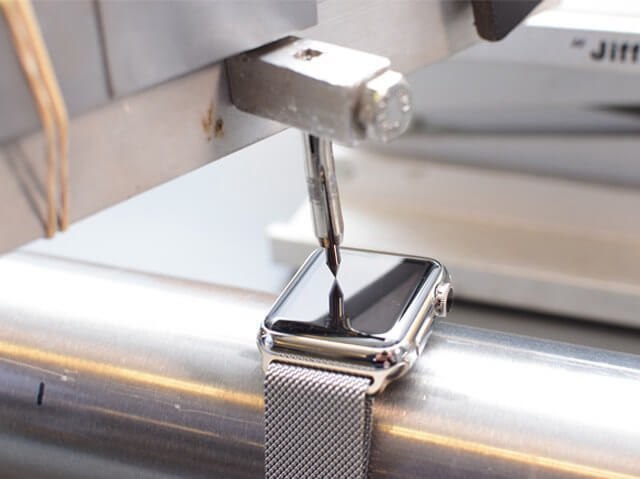Sapphire crystal glass vs Mineral glass
The crystal of a watch — the clear cover that goes over the dial and protects it – can be made of a variety of materials. Generally, there are three types of crystals used in watchmaking: sapphire crystals; mineral crystals; Plexiglas (often called plastic) or hesalite (acrylic) crystals. Depending on the cost of the watch, or the rugged functions of the watch, different crystals are used—influencing the price and value of the watch.
Typically in the luxury watch field, sapphire crystals are preferred. Sapphire is extremely strong and scratch resistant – making it the top choice for a fine timepiece. While sapphire is the more expensive of the three crystal choices, it has its advantages due to the scratch and shatter resistance. In addition to being scratch resistant, a sapphire crystal has more ability to withstand cracks and breakage than glass or plastic.
Generally a mineral crystal is an ordinary glass crystal that has been heat treated or chemically treated to withstand scratches. While it is not as scratch-resistant as sapphire, it is more scratch-resistant than plastic. Under extreme hot or cold conditions – if the glass is bluntly hit on a certain angle – the glass can actually crack or shatter.
And how to separate sapphire from mineral glasses?
1.Water drop, if you drop the water on sapphire glasses, the water will be flock together just like on lotus leaf, but the water will be divergent on the mineral glass.
2.Color, the color of sapphire is a little pink or milk white, and mineral glass often have blue color.
3.Touch and feel, you will feel icy if touch the sapphire, and it is not for mineral.
4.You also can use professional machine to measure the density, luminousness, refractivity, hardness and some other technical information.
Hardness for sapphire crystal
Hardness for mineral glass















